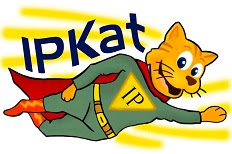The New European Patent by Alfredo Ilardi
"On 17 December 2012, following a complex negotiation which lasted 12 years, the
European Parliament adopted Regulations (EU) 1257/2012 and 1260/2012 and the text of the Agreement on a Unified Patent Court (UPC Agreement). These instruments institute the ‘European patent with unitary effect’, the first unified system for the protection of inventions within the European Union. The two Regulations will be applicable after the entry into force of the UPC Agreement, which was signed on 19 February 2013 by 24 Member States of the European Union. This book traces the evolution of the idea behind the institution of the European patent with unitary effect, including a comparative analysis of the existing parallel regional and international procedures for the protection of inventions. It presents a synthesis of the different phases of the negotiations which led to the adoption of the first unitary patent system within the European Union. In addition it examines the provisions of the two Regulations, of the UPC Agreement and of the jurisdictional system under Brussels I Regulation. Finally, it reproduces in the Appendix the texts of Regulations (EU) 1257 and 1260/2012 and of the UPC Agreement."
Published May 2015The Author
Alfredo Ilardi is former Head of the Collection of Laws and Treaties of the World Intellectual Property Organization.
164pp Hbk 9781849468336
RSP: £65 / US$130 / CDN$130
Discount Price: £52 / US$104 / CDN$104
Order Online
UK, EU, ROW: If you would like to place an order you can do so through the Hart Publishing website (link below). To receive the discount please quote the reference ‘EPLAWBLOG’ in the voucher code field and click ‘apply’.
http://www.hartpub.co.uk/BookDetails.aspx?ISBN=9781849468336
US: If you would like to place an order you can do so through the Hart Publishing website (link below). To receive the discount please quote the reference ‘EPLAWBLOG’ in the special instructions field on the credit card screen.
http://www.hartpublishingusa.com/books/details.asp?ISBN=9781849468336
Hart Publishing Ltd, 16C Worcester Place, Oxford, OX1 2JW
Telephone Number: 01865 517 530
Fax Number: 01865 510 710
Website: http://www.hartpub.co.uk
Why is this book relevant to the iptango followers?
While the blog is happy to publish any IP material of good quality, one needs to be careful. At the end of the date the blog is for the Latin American market and if one is to endorse a book, it needs to do so with property as to establish a link why the book should be in the Latin American reading list - especially since the book is about the new European Patent system.
Here is my summary: matter that covers the book can be reflected in some discussion heard on the South and Central American continents. The blog has sometimes referred to main trade blocs that do exist in Latin America such as the Andean Community (CAN) and Mercosur. CAN for instance has ‘Decision No. 486 Establishing the Common Industrial Property Regime’ and has a Community trade mark system – similar to the Community trade mark (CTM). The patent system is also regulated and harmonised through Decision 486. In this line when reading the book it was easy to reflect on how the new European Patent can be followed (or not) by the Latin American region.
The book contents and material helpful to have it in your intellect [can I add this to my skills in linkedln?] are: ‘global protection of IPRs. The project for the revision of the Paris Convention for the protection of industrial property and the TRIPS agreement.’ The section gives an overview how certain legislations marked the beginning of the changes to come. Going deeper into the heart of the book and putting aside the negotiation of the unitary patent system one can indulge in the analysis of the legal instrument. In this chapter one can make some comparisons with Decision 486 which for example address priority claims - granting same priority rights as those granted by the Paris Convention. Moreover, a chapter is dedicated to the European Unified Patent Court similar to the one established by CAN [CAN created a uniform court procedure that allows simultaneous actions to be brought for infringements to patents as well as other IPRs]. Indeed one can compare and contrast the expression of ideas found in the book with some cases in Latin America. In my case, I am more aware of CAN but perhaps some of you can also place some similarities with other trade blocs IP system. At the end what is sought with the Unitary Patent is the same aim i.e. ‘regional cooperation on patent harmonization’ and at this stage, going further that just an adoption of a common patent law, by having an agreement on the interpretation and practical application of the law.
Thanks Emma Swinden (Marketing Manager @ Hart Publishing) for the book and for the support and trust given to this blog.














